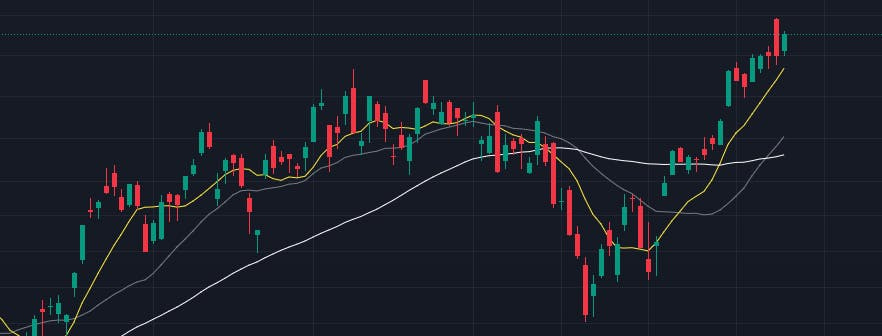Chaos, Chaos, Chaos: The Formless Matter Before the Existence of the Universe
Hi, Friends,
Have you noticed we are already at the end of May?!
I feel like time is flying these days, and I hope it is flying for you, too, if you are having fun.
Have you signed up for the People Analytics Meet-Up already?
If not, there is still time! Click here!
So, today, I wanted to discuss chaos based on the talk inspired by Tracy Xiong-Morel and Yannick Fouagou from Gore Mutual Insurance.
In particular, I will recite the three types of chaos they discussed and explain how we can apply them to People Analytics!
Specifically:
Macro Crisis
Org Crisis
Mini Crisis
Let's go!
Defining Chaos
I think we must define chaos for productive discussion.
Merriam-Webster defined chaos as the state of utter confusion.
And if we review the synonyms of the word, it is usually something bad: mess, disorder, hell, disorientation.
This naturally speaks to our human desire for certainty versus uncertainty.
Certainty is safe and predictable.
Uncertainty is dangerous and random.
If we remove our feelings from the equation, chaos becomes more neutral: a state in which chance is supreme.
Chaos represents the randomness of things.
So, everything we see in the world and make inferences about is a product of order and disorder, signal and noise.
Signal: The true stimulus giving us an honest and reliable clue
Noise: Chaos of the world that distracts us from seeing the clue
For example, you might see someone smiling at everyone and make an inference that they are extraverted, considering the smile as the signal. However, it could just be a great day for this person as they have received a promotion with a 30% raise, which is a true cause of behaviour and a random occurrence.
In other words, your inference of extraversion may be incorrect here, as a random event is the cause of the behaviour.
Then your observation follows the following equation:
Observation = Signal + Noise
OR
Reality = Order + Chaos
The data is then a collection of observations that allow you to strip out the random noise and see the signal. Similarly, reality combines orderly patterns diluted in the sea of chaos.
Now that we have defined chaos, let's talk about it in People Analytics.
Chaos in People Analytics
When it comes to people analytics, a common statistical view of chaos is that it's the random error in all of our analyses because data are imperfect.
However, chaos usually emerges over time as a random (usually threatening) event.
In the latter view, chaos breaks the pattern and changes our reality.
There are three types of chaos:
Macro Chaos
Organizational Chaos
Micro Chaos
But we expect the same outcome from them all: pattern change.
Macro Chaos
Macro Chaos is the Black Swan events that completely change how the world works and will affect your organization. Here are some examples you have all seen over the last several years:
Global Pandemic
Russia's invasion of Ukraine
Hamas attack in Israel
Global Financial Crisis
Inflation and Related Interest Rate Decisions
How does this change our People Analytics? Let's review the case of the pandemic:
The way people work shifts
Engagement is lower
Salaries start to climb for some roles
International expansion
Worker layoffs
We can go on and on, but each of these changes will be reflected in numbers rapidly and seen across multiple companies and sectors of the economy.
These Macro events will have a short-term impact, as a recent combination of events resulted in a stock market pullback that lasted a few days but caused all kinds of panic:
Or more prolonged events, like the global pandemic, which taught us how to live in chaos for years.
What to do in a Macro chaos?
Learn about the crisis and its effect on your organization
Use analytics to see impacts on your company metrics
Adjust your bias in the direction of your company
Adjust your strategy
Communicate, communicate, communicate
In times of chaos, people are scared
In general, we don't like uncertainty
So, create certainty via your communications
Organizational Chaos
There is nothing as impactful as weak revenue and profitability numbers.
If you are in the public market, your company's valuation can drop immediately (especially if your CEO says something investors don't like), as no investor wants to stay with a losing company.
It's more difficult to see in smaller organizations where valuations are not displayed to the public on a 1-minute price action chart.
Still, your leadership team probably thinks the same whenever you see numbers that make you scratch your head.
Chaos comes in layoffs, organizational re-design, re-org, or optimization—all terms signalling that change is coming.
You will see this chaos in your people analytics:
Retention will change because many people might think they are on a sinking ship
Engagement will go down
And, of course, productivity might take a dip down the line as people will lose time worrying about the future
This internal change can be positive like an infusion of capital or a large contract won. However, the chaos is temporary, coming in as euphoria, not an actual fear.
The company will continue with the strategy as emotions settle.
What to do when facing organizational chaos:
Lead: This means providing visibility and the next steps to your team; micromanagement might also be the approach here, as working with uncertainty is not everyone's strong suit
Transparency: People will make up their own stories. Instead, direct the narrative and dispel the myths. Rumors propagate fast, and you want to ensure the conversation has the right tone
Don't make promises: If you break them later, you will lose credibility. This does not mean you cannot state your expectations. Promises are not expectations.
Individual Chaos
This type of chaos is what an individual brings to the table.
It's connected directly to your employee's circumstances and does not affect the organization or the economy at large.
Here are a few examples of individual-level chaos:
Personal injury and sickness
Relationship troubles
Waking up on the wrong foot
You will most likely see it in your anonymous surveys or aggregate statistics.
These changes are too small to notice.
But, as a manager, you will spot it in your employees immediately.
Your job as a manager here is not to resolve the issue:
It is to show compassion and understanding
It is to make accommodations as needed
It is to help support an individual
With that, I did not know I could talk about chaos this much.
Maybe I should record these as videos?
Ciao,
K
Whenever you’re ready, there are 2 ways I can help you:
#1
If you’re still looking to get started in People Analytics, I recommend starting with my affordable course:
Practical People Analytics: Build data-driven HR programs to 10x your professional effectiveness, business impact, and career. This comprehensive course will teach you everything from building an HR dashboard for business results to driving growth through more advanced analytics (i.e., regression). Join your peers today!
#2
If you are looking for support in your human capital programs, such as engagement, retention, and compensation & benefits, and want to take a more data-driven approach, contact me at Tskhay & Associates for consulting services. Or simply reply to this email!









